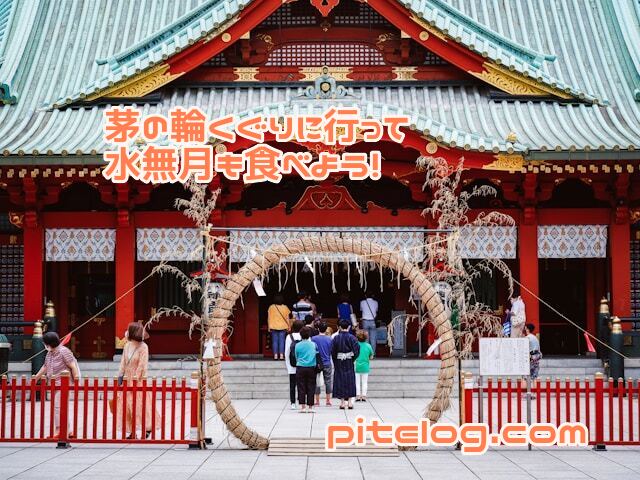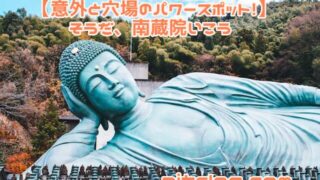くむろぐをご覧いただきありがとうございます。
今回のブログは、茅の輪くぐりについての記事です。
カテゴリー的には息抜きTOEICとなります。
日本の和カルチャー好きさんはもちろん、英語の勉強に疲れたTOEICerのあなたにもおすすめの癒し系イベントです。
早速いってみましょう!
茅の輪くぐり:伝統的な日本の浄化儀式
茅の輪くぐり (Chinowa Kuguri) は、神道の伝統的な浄化儀式。
わかりやすく簡単に説明すると、次のような感じになります。
茅の輪くぐりって何なん?
茅の輪くぐりは、茅(ちがや)という草で作られた大きな輪をくぐる、神道の儀式です。
この儀式は参加者を浄化し、災いを払い、健康をもたらすと信じられています。
茅の輪くぐりってどんな感じ?
この儀式は特別な祭りの時に行われることが多く、特に年の中間である6月の終わり~7月頃までに行われます。
神社によっては、7月の終わり頃に行われるところもあり、時期には幅がありますよ。
基本的には、年が明けてからの半年間の汚れを祓う、という意味合いが含まれています。
日本各地のいろんな神社で行われますが、一般的に有名な茅の輪くぐりとして、6月30日に行われる「夏越の大祓(なごしのはらえ)」という行事があります。
くぐり方
- 輪に近づく: 参加者は茅(かや)で作られた大きな輪に近づきます。
- 一回目のくぐり: 左から右へ輪をくぐり、伝統的な祓詞や祈りを唱えながら行います。
- 二回目のくぐり: 右から左へ輪をくぐります。
- 最後のくぐり: 最後にもう一度、真っ直ぐに輪をくぐります。
どんなご利益があるの?
茅の輪くぐりという伝統行事には、主に次のような効果があるとされています。
- 浄化: 身体と心を不浄や悪影響から浄化します。
- 守護: 災難や疫病、事故、不運から守ります。
- 健康促進: 健康と幸福をもたらします。
茅の輪くぐりは、まさに良いことづくしですね。
文化的な意義
この習慣は、日本の文化と神道の信仰に深く根ざしており、浄化と自然とのつながりの重要性を強調しています。
人々が心身をリセットし、前向きなエネルギーと調和するための方法です。
ないとは思いますが、間違っても、茅を引き抜いて持ち帰ったりしないでくださいね!
茅の輪くぐりに行って英語で交流してみよう
日本を訪れる際、特にこの季節に各地の神社を訪れると、茅の輪くぐりを観覧、あるいは参加することができます。
夏の暑い時期に日本の精神性や習慣に触れることのできる、唯一無二ともいえる文化体験です。
東京の大宮八幡宮、埼玉の鴻神社、京都の八坂神社、島根の出雲大社などが有名な茅の輪くぐりのパワースポットですね。
外国人もたくさん観光に訪れていますし、もし機会があれば積極的にコミュニケーションをとってみましょう。
英語が思ったように出てこなくても大丈夫です。
身振り手振りのノンバーバルコミュニケーションで、意外と楽しく交流できますよ!
またインバウンドのみなさんにも、日本を訪れた際にはぜひ茅の輪くぐりに参加し、日本の意味深い伝統文化を楽しんでほしいと思います。
水無月を食べてみよう
茅の輪くぐりにあわせて是非食べてみたい、水無月という和菓子があります。
これは、主に6月に日本各地の和菓子屋さんで作られ、店舗やネットショップで売られています。
ういろうに小豆がたくさん乗った、シンプルかつ上品な和菓子です。
私もこれ大好きで、期間限定でなく1年中楽しみたい和菓子のひとつなんですよね。
……
ああもう、考えただけでお腹が空いてきました。
緑茶かお抹茶と一緒に食べたい!
コーヒーでも良いです。
茅の輪くぐり (Chinowa Kuguri) is a traditional Japanese purification ritual that is part of Shinto practices. Here’s an easy-to-understand explanation for English-speaking foreigners:
Chinowa Kuguri: A Traditional Japanese Purification Ritual
What is it?
Chinowa Kuguri is a Shinto ritual that involves passing through a large ring made of miscanthus reeds (a type of grass called “chigaya” in Japanese). This practice is believed to purify participants, ward off misfortune, and bring good health.
When and Where?
This ritual is commonly performed during special festivals, particularly around the middle of the year, in late June, and sometimes at the end of December. It takes place at Shinto shrines across Japan.
How is it done?
- Approach the Ring: Participants approach the large ring made of reeds.
- First Pass: They pass through the ring from left to right, often while reciting a traditional chant or prayer.
- Second Pass: Then, they circle back and pass through the ring again from right to left.
- Final Pass: Finally, they pass through the ring one more time, going straight ahead.
Why do it?
Chinowa Kuguri is believed to:
- Purify: Cleanses the body and mind from impurities and negative influences.
- Protect: Provides protection from misfortune and bad luck.
- Promote Health: Ensures good health and well-being for the coming months.
Cultural Significance
The practice is deeply rooted in Japanese culture and Shinto beliefs, emphasizing the importance of purification and connection with nature. It’s a way for people to reset and refresh their spirits, aligning themselves with positive energy.
Experience It
Visitors to Japan can often participate in this ritual at various Shinto shrines, especially during the times when it is traditionally observed. It’s a unique cultural experience that offers insight into Japanese spirituality and customs.
Feel free to participate in Chinowa Kuguri if you visit Japan during one of these times, and enjoy a meaningful cultural tradition!















